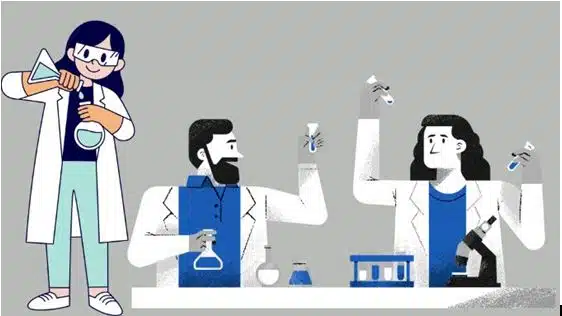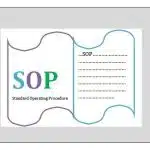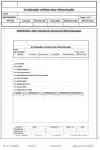Learn about the cleaning validation protocol for quality control laboratory area of cleaning validation process in the pharmaceutical industry.
Table of Contents

1. Introduction
Cleaning validation is a critical part of quality assurance in pharmaceutical manufacturing. The purpose of this cleaning validation protocol is to ensure that cleaning procedures are effective in removing residues of active pharmaceutical ingredients (APIs), excipients, cleaning agents, and microbiological contaminants to adhere to legal standards, guarantee product quality, and avoid cross-contamination.
This protocol outlines the methodology and approach for validating the cleaning process, ensuring compliance with Good Manufacturing Practices (GMP).
2. Objective
To establish and document the cleaning validation process to demonstrate that cleaning procedures are capable of consistently removing all residues from equipment, thereby ensuring that the next product manufactured is not contaminated by the previous product.
3. Scope
This protocol applies to all equipment used in the manufacturing, processing, packaging, and storage of pharmaceutical products, including reactors, mixing vessels, tablet presses, packing lines, etc.
4. Responsibilities
4.1. Quality Control (QC): Perform sampling, analysis, and documentation.
4.2. Production: Ensure the equipment is cleaned as per the cleaning procedure.
4.3. Validation Team: Oversee the validation process, including protocol creation, execution, and final approval.
4.4. Regulatory Affairs: Verify compliance to regional, national, and worldwide standards.
5. Definitions
5.1. Residue: Any remaining API, excipients, cleaning agents, or microbial contaminants.
5.2. Cleaning Procedure: The standardized procedure for cleaning the equipment after each manufacturing process.
5.3. Cleaning Validation: The documented process of evaluating the effectiveness of cleaning procedures.
6. Regulatory Requirements
The cleaning validation protocol will comply with the following regulations:
6.1. FDA (21 CFR Part 211)
6.2. EU GMP Guidelines (Eudralex Volume 4, Part 2)
6.3. ICH Q7A (Good Manufacturing Practice for Active Pharmaceutical Ingredients)
7. Methodology
The cleaning validation protocol will follow these key steps:
7.1. Equipment and Product Risk Assessment
7.1.1. Identify equipment and product contact surfaces that require validation.
7.1.2. Assess potential risks of cross-contamination, including the worst-case scenario (e.g., toxic or high-potency drugs).
7.2. Establish Cleaning Procedures
7.2.1. Develop standardized cleaning procedures (SOPs) for each piece of equipment.
7.2.2. Cleaning methods may include manual cleaning, automated cleaning (CIP), or a combination of both.
7.2.3. Define cleaning agents, concentration, temperature, and contact time.
7.3. Sampling Plan
7.3.1. Sampling Sites: Identify critical points of contamination (e.g., product contact surfaces, hard-to-clean areas).
7.3.2. Sampling Methods: Select methods for residue analysis, such as swab sampling, rinse sampling, or surface sampling.
7.3.3. Sampling Frequency: Conduct validation at different time intervals to ensure cleaning consistency.
7.4. Analytical Methods
7.4.1 Residue Testing: Perform appropriate analytical methods for detecting:
7.4.1.1.Use techniques like High-Performance Liquid Chromatography (HPLC) or Ultra 7.4.1.2. High-Performance Liquid Chromatography (UHPLC).
7.4.1.3. Use methods like Total Organic Carbon (TOC) analysis or specific assays for cleaning agents.
7.4.1.4. Use microbial testing methods like Total Aerobic Count (TAC) or specific pathogens (if applicable).
7.4.2. Acceptance Criteria:
7.4.2.1.API residue: No more than 10 ppm of the maximum allowable carryover (MACO) for the next product.
7.4.2.3. Cleaning agent residue: Residues should not exceed the established safe limits for that cleaning agent.
7.4.2.3. Microbial contamination: Microbial levels should be within acceptable limits.
7.5. Execution of the Cleaning Validation Protocol
7.5.1. Initial Cleaning Validation (IQ): Verify that the equipment and cleaning processes are set up correctly, including proper cleaning agents, tools, and operating procedures.
7.5.2. Operational Cleaning Validation (OQ): Perform cleaning tests under normal operating conditions and validate the process parameters such as time, temperature, and detergent concentration.
7.5.3. Performance Cleaning Validation (PQ): Validate the effectiveness of the cleaning procedure under worst-case scenarios, such as higher residue levels and longer cleaning cycles.
7.6. Documentation
Document the entire cleaning validation process, including:
7.6.1. Cleaning procedure details
7.6.2. Equipment used
7.6.3. Sampling points
7.6.4. Sampling results
7.6.5. Analytical test results
7.6.6. Deviations and corrective actions (if applicable)
8. Risk Management Approach
Perform a risk assessment (e.g., Failure Mode and Effect Analysis, FMEA) to identify potential risks associated with cleaning and develop mitigation strategies.
9. Revalidation Criteria
Revalidation required to be conducted during the following situations:
9.1. Alterations to the machinery or production procedure.
9.2. New goods were added to the production line.
9.3. Significant changes to cleaning procedures, detergents, or agents used.
9.4. After any major repair or modification to equipment.
9.5. Periodic revalidation at regular intervals (e.g., annually) to ensure continued compliance.
10. Conclusion
The cleaning validation protocol is an essential component of ensuring product quality and safety. Successful completion of the validation process will demonstrate that cleaning procedures are effective, reproducible, and compliant with regulatory standards.
References
FDA 21 CFR 211 – Current Good Manufacturing Practice for Finished Pharmaceuticals.
Eudralex Volume 4 – EU Guidelines for Good Manufacturing Practice for Medicinal Products for Human and Veterinary Use.
ICH Q7A – Good Manufacturing Practice for Active Pharmaceutical Ingredients.
Related Topics:
- Cleaning Validation Protocol for Production Area in Pharmaceuticals
- Cleaning Validation Master Plan (CVMP)
- Pharmaceutical Validation Program

Abdus Sobhan Salim is professional experienced pharmacist in pharmaceuticals, author and founder of pharmabossbd.com, the first Bangladeshi pharmaceutical blogger since 2019.



